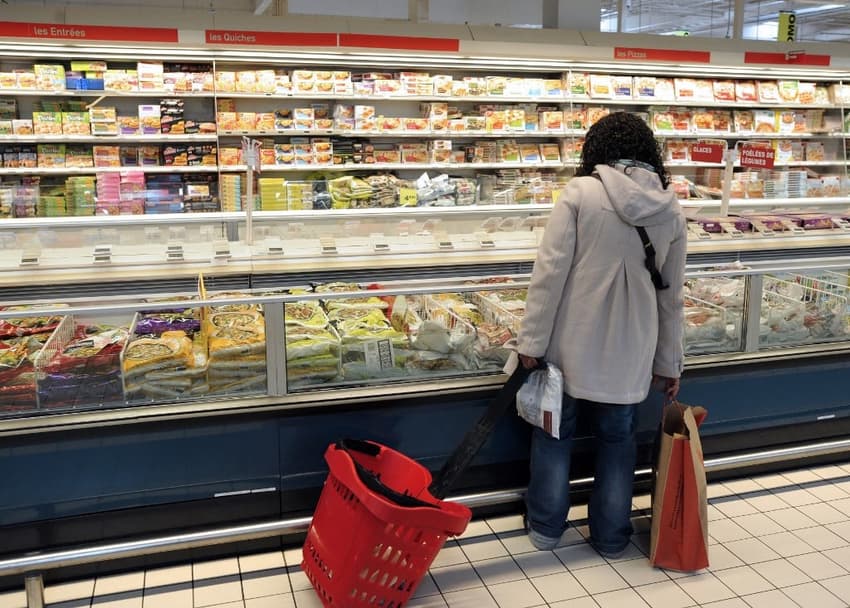Austria climbs to 'fourth most expensive country' in the eurozone

Inflation in Austria remains at high levels while other EU countries have managed to contain the rising cost of living, research shows.
A recent study by the Austrian Institute of Economic Research (WIFO) has revealed that Austria has climbed to the fourth position among the most expensive countries in the eurozone, behind Luxembourg, Finland and Ireland, Vienna.at reported.
This is a significant jump from 20 years ago when Austria was only ranked seventh. Josef Baumgartner, an inflation expert at Wifo, predicts that Austria may move towards the third spot in the near future.
The concept of how expensive each country is takes into account several measurements, but it is closely connected to inflation rates, the expert explained.
READ ALSO: ANALYSIS: Can Austria’s government get inflation under control?
According to Statistics Austria, the inflation rate in April is expected to be 9.8 percent, which is an increase from the 9.2 percent rate in March. The increase is particularly notable in the areas of leisure, travel, and services, and the cost of living has been high for months in the Alpine Republic.
How does Austria compare with Germany?
Meanwhile, Germany remains in eighth place, just as it was 20 years ago. The European Union has been collecting price levels in member countries since 2003, and there was little difference in the general price level between Germany and Austria at that time.
However, from 2007, the gap between the two countries began to widen rapidly, with the difference rising to almost 10 percent by 2020. Although inflation in Austria has been lower than in Germany for some time in 2021/2022, the price gap between the two countries remains significant.
Baumgartner notes that the price difference between Austria and Germany is even more significant when certain product groups are examined individually rather than looking at the entire basket of goods at once.
READ ALSO: Five things that will get more expensive in Austria in May
For example, foods were up to three to five percent cheaper in Germany around the time of Austria's accession to the EU. In 2020, the gap between the two countries was 20 percent, although it is likely to have fallen again in 2021 and 2022. This is because from mid-2021 to mid-2022, inflation in Austria was exceptionally lower than in Germany, especially for food products.
However, the compared inflation rates between both countries have resumed their 'normal' dynamic since then, as inflation in Austria is up to two percentage points higher than in Germany.
Comments
See Also
A recent study by the Austrian Institute of Economic Research (WIFO) has revealed that Austria has climbed to the fourth position among the most expensive countries in the eurozone, behind Luxembourg, Finland and Ireland, Vienna.at reported.
This is a significant jump from 20 years ago when Austria was only ranked seventh. Josef Baumgartner, an inflation expert at Wifo, predicts that Austria may move towards the third spot in the near future.
The concept of how expensive each country is takes into account several measurements, but it is closely connected to inflation rates, the expert explained.
READ ALSO: ANALYSIS: Can Austria’s government get inflation under control?
According to Statistics Austria, the inflation rate in April is expected to be 9.8 percent, which is an increase from the 9.2 percent rate in March. The increase is particularly notable in the areas of leisure, travel, and services, and the cost of living has been high for months in the Alpine Republic.
How does Austria compare with Germany?
Meanwhile, Germany remains in eighth place, just as it was 20 years ago. The European Union has been collecting price levels in member countries since 2003, and there was little difference in the general price level between Germany and Austria at that time.
However, from 2007, the gap between the two countries began to widen rapidly, with the difference rising to almost 10 percent by 2020. Although inflation in Austria has been lower than in Germany for some time in 2021/2022, the price gap between the two countries remains significant.
Baumgartner notes that the price difference between Austria and Germany is even more significant when certain product groups are examined individually rather than looking at the entire basket of goods at once.
READ ALSO: Five things that will get more expensive in Austria in May
For example, foods were up to three to five percent cheaper in Germany around the time of Austria's accession to the EU. In 2020, the gap between the two countries was 20 percent, although it is likely to have fallen again in 2021 and 2022. This is because from mid-2021 to mid-2022, inflation in Austria was exceptionally lower than in Germany, especially for food products.
However, the compared inflation rates between both countries have resumed their 'normal' dynamic since then, as inflation in Austria is up to two percentage points higher than in Germany.
Join the conversation in our comments section below. Share your own views and experience and if you have a question or suggestion for our journalists then email us at [email protected].
Please keep comments civil, constructive and on topic – and make sure to read our terms of use before getting involved.
Please log in here to leave a comment.